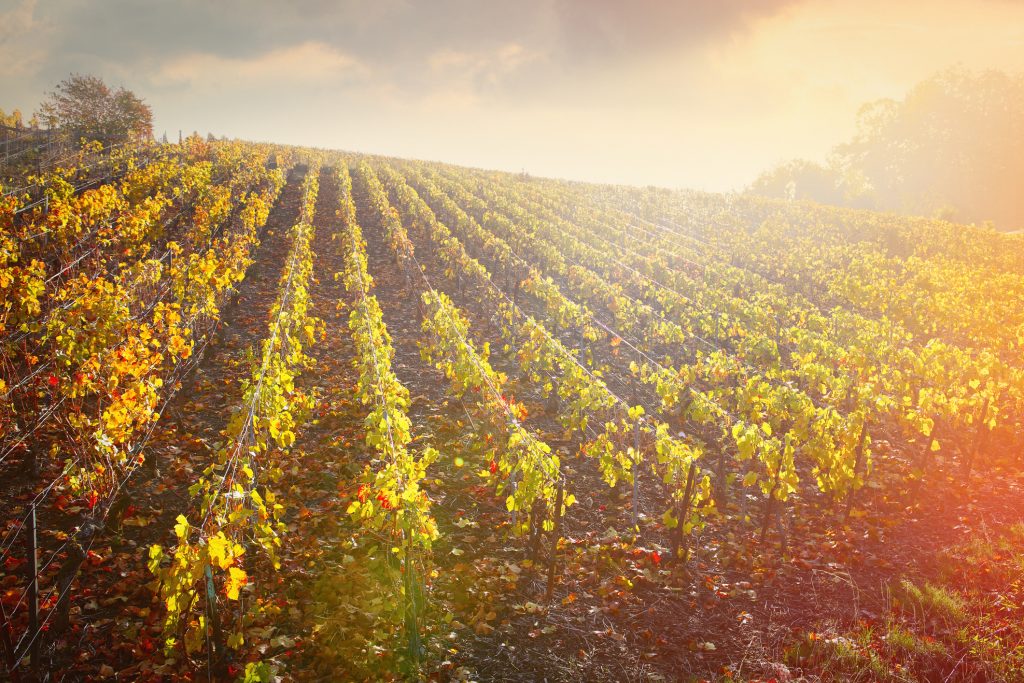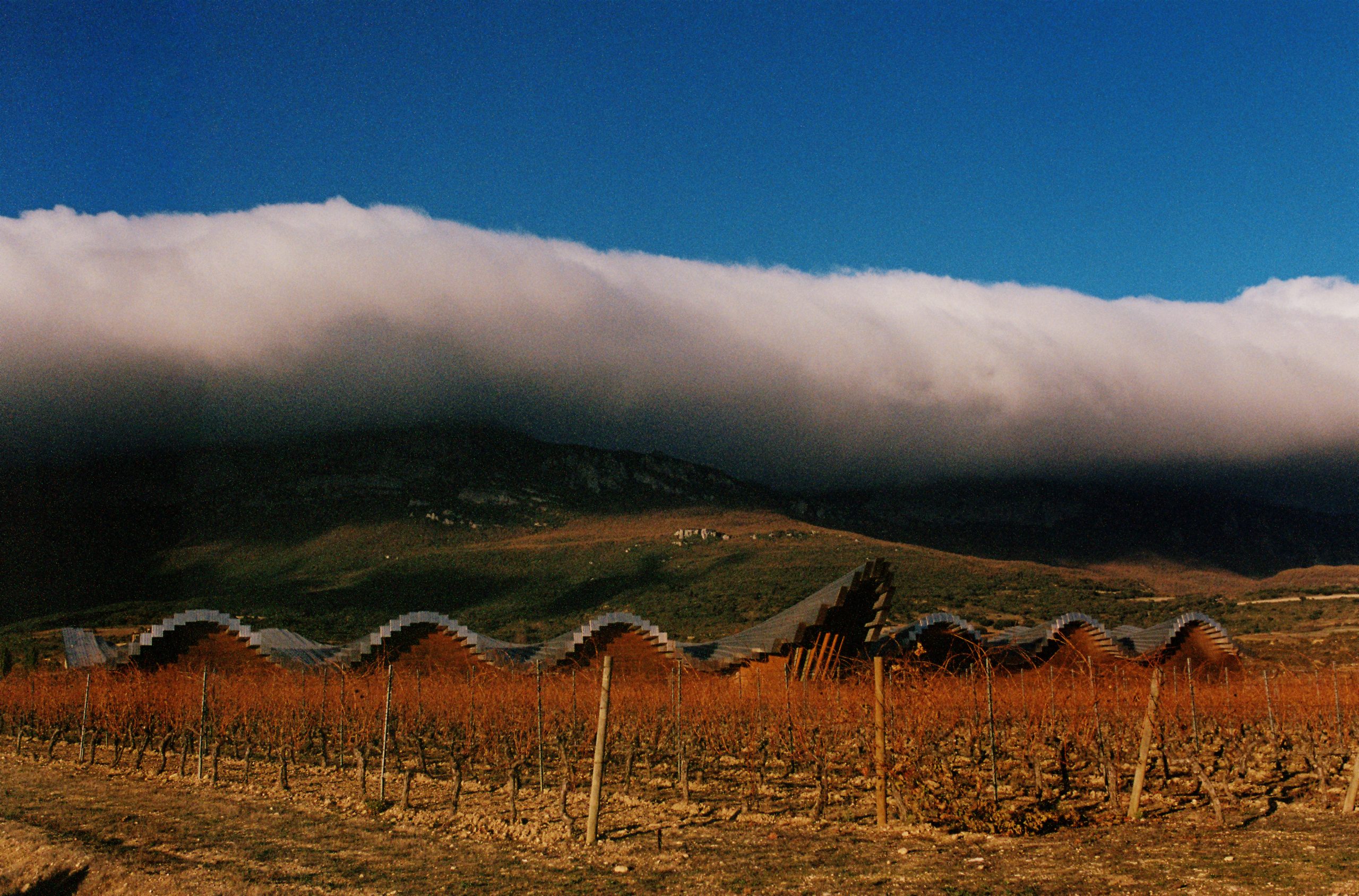First full report on the 2021 Champagne harvest
Giles Fallowfield provides the first full report on the 2021 Champagne harvest, after an incredibly challenging growing season across the region.

The harvest in Champagne began officially on 6 September in the Côte des Bars village of Buxeuil, just to the south of Bar-sur-Seine and often one of the earliest crus to start.
It ended at the start of this week (Monday, 27 September) and with the weather much better over the past seven or eight days, when most of the Côte des Blancs has been harvested – picking officially began in major crus like Chouilly, the largest cru here, Avize and Cramant only on the previous Monday (20 September) – at least its ended on a better note for some than it started.
To say it’s been a very difficult harvest is an understatement. The region has been hit by the worst frosts in recent times (certainly since 2003 when there was 43% frost damage), hail which wholly destroyed half the 500 hectares badly affected, lots of rain, powerful storms and some severe downpours, and, mainly because of all this rain with intermittent mild weather, the most widespread and virulent attach of mildew and powdery mildew, quite a lot worse than in 2016 and 2012, that’s been seen for many years. And botrytis was rapidly becoming a problem as picking was due to start.
Too much water, not a lack of it, as in the previous three very warm and virtually disease-free harvests, has been the main issue stressing out growers over many weeks, with those on heavier clay soils often finding it too wet to get into the vineyard to treat the vines. For those farming organically, and it’s a group that’s growing albeit slowly, after three pretty ideal vintages, 2021 has been a nightmare year. It’s hard not to feel deep sympathy for those in their first year of conversion.
After a mild, damp spring, vegetative growth began in late March and just as the vines were coming into leaf and at their most vulnerable, between 6 April and 3 May there were 12 days of frost with the lowest temperatures and most damage recorded 6-7 April and 3 May. Temperatures dropped to -5.8degC in Celles sur-Ource and -5.2degC in Reims on the night of 3 May. The Champagne Comité puts the average loss of crop from frost damage at close to 30% on average across the region, but some areas were hit much harder, particularly in the southern most vineyard areas where vegetative growth was more advanced.
In the Barséquanais, the area bordered by Bar-sur-Seine in the north, Polisot to the south-west and Landreville to the south-east, the damage is put at 63%, while in the larger Bar-sur-Aubois district south of Bar-sur-Aube, that’s nearly 90% planted with Pinot Noir, 51% of the vineyard was affected. The Massif de Saint Thierry to the north-west of Reims is the other hardest hit region with 45% damage, although Pascal Doquet, based in Vertus, says the Vitryat suffered similarly. “We lost 50% of the yield to frost in the family vineyards in Vitryat (we call Perthois) but only one part of Vertus was damaged.” [Vitryat is the area located to the north-east of Vitry-le-Francois, or just over 40kms east of the Côte des Blancs, that’s become widely favoured by négociants looking for a good source of Chardonnay to use in their Blanc de Blancs styles (Ruinart and Lanson to name two).]
Generally, May was colder and wetter than on average with 19 days when it rained and 20% fewer sunshine hours on average. After the gloomy weather in May there were some violent storms in in early June (3-4) with 30-50mm of rain falling in a few minutes in Bar-sur-Seine and 33.7mm in Oeuilly, accompanied by localised hail, notably in Trépail which was hit for a second time.
There followed two weeks of tranquil warm weather (5-18 June), with temperatures going over 30degC, but this triggered violent thunderstorms on 19 June and as much as 63.7mm of rain fell in Chezy-sur-Marne in the western reaches of the Marne Valley and barely less in Charly-sur-Marne. Large hailstones of 5cms in diameter and more were observed with wind gusts of over 150km/hr. Further east, Verzy in the Montagne de Reims also suffered localised storms with 48.6mm of rain registered.
By the end of May, the Champagne Comité was already warning of a high risk of mildew and after the heat of early June and then the return of stormy weather from 19 June, its intensity is variable, but mainly concentrated in the northern part of the vineyard. The downy mildew problem becomes intense from the last weekend of June. At the start of July, the mildew situation has become bad on the entire western fringe of the vineyard in the Marne and Aisne valleys and the area to the south-east of Château Thierry around Condé en Brie.
The areas less affected by the storms, going from the Côte des Blancs and heading south-west to the villages of the Val du Petit Morin and then the Sézannais, have still largely avoided major problems with mildew up to the start of the July, while in the Montagne de Reims and the Grande Vallée, running from Mareuil-sur-Aÿ past Dizy, Hautvillers and Cumières, it’s broadly been kept under control. This is before the very heavy rain, conservatively put at 100mm, that falls again, in the run up to Bastille Day (13-15 July).
It’s a harvest in Champagne that many will want to forget, but visiting during the second week of the harvest (13-18 September) I saw picking taking place in vineyards around Aÿ, Mareuil-sur-Ay, Verzenay, Mailly and just slightly to the west of Epernay in Moussy, which is barely into the Marne Valley. In these areas producers are expecting yields of between 6,000 and 12,000kgs/ha and relatively healthy, decent quality grapes, with a good balance between ripeness and acidity. Parts have been hit by hail and mildew, but not to the same extent as in the Marne Valley. The 2021 harvest wasn’t a disaster for everyone.
In Aÿ itself, at the press house run by Philippe Brun of Roger Brun, he is talking about picking around 8,000kgs/ha in his own vineyards. And on 14 September he was crushing some good quality Pinot Noir from this Grand Cru destined for Charles Heidsieck that looked healthy and was picked at around 10.2deg potential alcohol, in a low yielding plot just above the village. “Yields in Aÿ are variable,” says Brun. “Up near the forest, where humidity is high, the frost damage on 5 April was much more severe and yields as low as 2,000kgs/ha, but vines on the mid and lower slopes were much better protected.”
Partner Content
Heading off to Verzenay and the newly refurbished press house of Lanson I meet with winemaker Hervé Dantan, whose been visiting grower suppliers in the area concerned about low yields due to all the difficulties they’ve had. But their problems seem small fry compared to others in the Marne Valley where Dantan says “some have so few grapes they aren’t worth picking”. At Lanson’s own 16-hectare biodynamically farmed vineyard in Vineuill, on the north bank of the Marne Valley, they will only be harvesting around 1,000kgs/ha, because all the mildew problems and the early frosts.
At the Bruno Michel press house in Moussy the harvest has just started and on Day two (15 September) in warm sunshine it’s in full flow, with very healthy-looking Chardonnay and Meunier coming in from vines nearby. This certified organic estate, mostly in the Coteaux Sud d’Epernay, has grown from 12 to 17 hectares and spreads across several villages in their area – including Chavot, Mardeuil, St-Martin-d’Ablois and Vinay – but it’s mostly in Moussy and neighbouring Pierry, says Guillaume Orban, who now runs it with his wife Pauline, daughter of Bruno Michel who sadly died in August 2019.
“We started with the Meunier yesterday,” says Orban. “It had already reached 10.5deg potential alcohol two day ago. We are going to get 10,000 to 11,000kgs/ha for the Chardonnay, and 7,000 to 8,000kgs/ha on the Meunier in this area, but that’s down to a lot of hard work [achieving that level of yield in organic production]. My wife has been in the vineyard at 4am every morning from April through to July. But some plots lost as much as 60% due to frost. Pauline Orban says, in terms of quality, “there a good maturity and lots of acidity too, a bit like 1996.” Although she admits she was only 10 at the time, they still have two pallets of the ‘96 on their lees in the cellar.
They also have vineyards further west in the Marne Valley village of Brasles, near Château-Thierry and St Agnan in Condé en Brie, both areas badly effected by frost and mildew and in their four hectares in the latter cru, he says yields are only around 1,500-2,000kgs/ha.
One of the other problems, widely reported by producers, is the lack of pickers. “Because of the reports of the low yield this year, a lot of people didn’t want to come, because they didn’t think they’d earn enough,” says Orban.
On Friday (17 September) I visit GH Mumm vineyards in Verzenay and Mailly where picking of Pinot Noir is continuing and we meet up with their new head winemaker Laurent Fresnet. Concerned about the onset of botrytis in their vineyards, he says they’ve applied, through the process known as derogation, to start picking from tomorrow (19 September) all the plots of Chardonnay that GH Mumm and Perrier-Jouët own, notably in Cramant and Avize, before those two crus officially open on Monday 20 September.
“We have to be quick, because of botrytis. We’re not looking for a high maturity, I want healthy grapes first. We weren’t expecting much at all one month ago, but now it’s better than we hoped with alcohol potential between 10 and 11deg and acidity levels 8.8-9gms/l (H2SO4). Another storm on Wednesday afternoon (15 September) caused more damage in the Montagne de Reims vineyards and in Trépail as a result of two hailstorms hitting, two-thirds of the crop is lost and they are looking at yields of between 3,000 and 4,000kgs/ha,” says Fresnet. “In the north and south of the Montagne de Reims, Verzy and Verzenay along with Ambonnay and Bouzy, the quality is good.”
On Thursday afternoon I meet with Louis Roederer’s head winemaker Jean-Baptiste Lécaillon at their press house in Aÿ, who takes me on a tour of Roederers’ own vineyards in this famous cru stretching from the Dizy border of Aÿ to the west, right across to Mareuil-sur-Aÿ on the eastern flank of Aÿ. He says yields vary in the Montagne de Reims from some parts of Verzy where they are as low as 3,000kgs/ha, up to 14,000kgs/ha in plots in Mareuil-sur-Aÿ. “The average for most is around 10,000kgs/ha. The ripeness levels in Aÿ have dropped slightly to around 10.6 deg potential alcohol after yesterday’s rain (15 September), he says. “The acid sugar blance in Aÿ is exactly what it was in 2012, so technically it’s the same.”
Most of Aÿ is soon to be picked and Lécaillon says they will be making Cristal, the plots for which we look at and they appear extremely healthy, but conditions are not quite good enough for Cristal Rosé. Two days later on 18 September he notes, “Cristal plots in Aÿ, Verzenay and Verzy show 10.5-11.3 potential alcohol and are ready to be picked.”
For the last week of the harvest in Champagne, with attention switching to the Côte des Blancs, Lécaillon describes the forecast as “Perfect. Cool temperatures at day, cold at night, no rain, all the ingredients needed for a final concentration of the Chardonnays.”
With the last of their Pinot Noirs picked in Hautvillers, Verzy and Verzenay picked on 23 September and Chardonnays in the Cote des Blancs villages of Mesnil-sur-Oger and Avize starting the day before he notes: “2021 is offering us some fantastic Chardonnays in Mesnil, Cramant and Avize picked at perfect balance sugar to acidity.”
One of the most difficult growing seasons in Champagne, which proved to be disastrous in terms of volume for many parts of the region, does at least finish on a high note, for those lucky enough to have well situated vineyards in the Côte des Blancs. And it looks likely that some good wines will be made, with the potential for fine vintage offerings from some producers.
Related news
The best brut non-vintage Champagnes of 2025
The 'family spirit' behind Champagne Gardet's 130th anniversary




